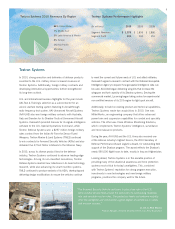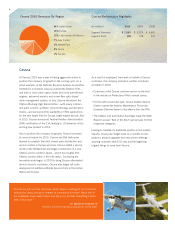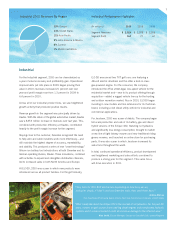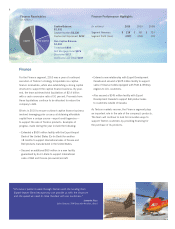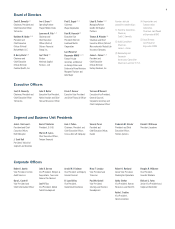E-Z-GO 2010 Annual Report Download - page 17
Download and view the complete annual report
Please find page 17 of the 2010 E-Z-GO annual report below. You can navigate through the pages in the report by either clicking on the pages listed below, or by using the keyword search tool below to find specific information within the annual report.
5
industries. Greenlee distributes its products through a global network of sales representatives and distributors and sells its products
directly to home improvement retailers and original equipment manufacturers. Through a joint venture, Greenlee also sells hand and
powered tools for the plumbing and mechanical industries in North America. The Greenlee businesses face competition from
numerous manufacturers based primarily on price, product quality and reliability.
Finance Segment
Our Finance segment, or the Finance group, is a commercial finance business that consists of Textron Financial Corporation (TFC)
and its consolidated subsidiaries, along with three other finance subsidiaries owned by Textron Inc. In the fourth quarter of 2008, we
announced a plan to exit the non-captive portion of the commercial finance business of our Finance segment while retaining the
captive portion of the business that supports customer purchases of products that we manufacture. We made the decision to exit this
business in order to address our long-term liquidity position in light of the disruption and instability in the capital markets. The non-
captive business is based primarily in North America and includes the following product lines: distribution finance, golf mortgage,
structured capital and timeshare. The exit plan is being effected through a combination of orderly liquidation and selected sales.
During 2010, we reduced our owned and managed receivable portfolio by approximately $2.4 billion and expect, depending on market
conditions, to substantially liquidate the remaining non-captive portfolio over the next three to five years.
Our Finance segment continues to originate new customer relationships and finance receivables in the captive finance business, which
provides financing primarily for new Cessna aircraft and Bell helicopters and, to a lesser extent, for new E-Z-GO and Jacobsen golf
and turf-care equipment. We also provide financing to purchasers of pre-owned Cessna aircraft and Bell helicopters on a limited basis.
New finance receivables are originated primarily outside the United States. Originations in the U.S. primarily finance purchases of
Textron-manufactured products for purchasers who have had difficulty in accessing other sources of financing.
In 2010, 2009 and 2008, our Finance group paid our Manufacturing group $0.4 billion, $0.6 billion and $1.0 billion, respectively,
related to the sale of Textron-manufactured products to third parties that were financed by the Finance group. Our Cessna and
Industrial segments also received proceeds in those years of $10 million, $13 million and $18 million, respectively, from the sale of
equipment from their manufacturing operations to our Finance group for use under operating lease agreements.
The commercial finance business traditionally has been extremely competitive. Our Finance segment is subject to competition from
various types of financing institutions, including banks, leasing companies, commercial finance companies and finance operations of
equipment vendors. Competition within the commercial finance industry primarily is focused on price, term, structure and service.
Our Finance segment’s largest business risks are continued access to financing through the capital markets and the collectability of its
finance receivable portfolio. See “Finance Portfolio Quality” in “Management’s Discussion and Analysis of Financial Condition and
Results of Operations” on page 27 for a discussion of the credit quality of this portfolio.
Backlog
Our backlog at the end of 2010 and 2009 is summarized below:
(In millions)
January 1,
2011
January 2,
2010
U.S. Government:
Bell
$ 6,858
$ 6,416
Textron Systems
1,438
1,408
Total U.S. Government backlog
8,296
7,824
Commercial:
Cessna
2,928
4,893
Bell
341
487
Textron Systems
160
256
Industrial
40
47
Total commercial backlog
3,469
5,683
Total backlog
$ 11,765
$ 13,507
Orders from Cessna customers, which cover a wide spectrum of industries worldwide, are included in backlog when the customer
enters into a definitive purchase agreement and the initial customer deposit is received. We work with our customers to provide
estimated delivery dates, which may be adjusted based on the customers’ needs or our production schedule, but do not establish
definitive delivery dates until approximately six months before expected delivery. There is considerable uncertainty as to when or
whether backlog will convert to revenues as the conversion depends on production capacity, customer needs and credit availability;
these factors also may be impacted by the economy and public perceptions of private corporate jet usage. While backlog is an
indicator of future revenues, we cannot reasonably estimate the year each order in backlog ultimately will result in revenues and cash
flows.


